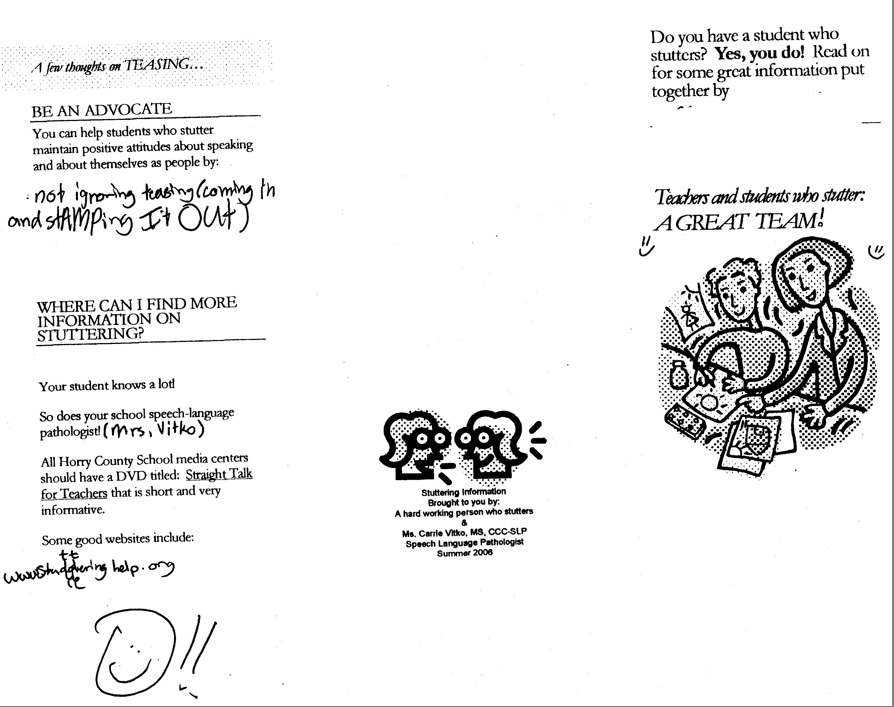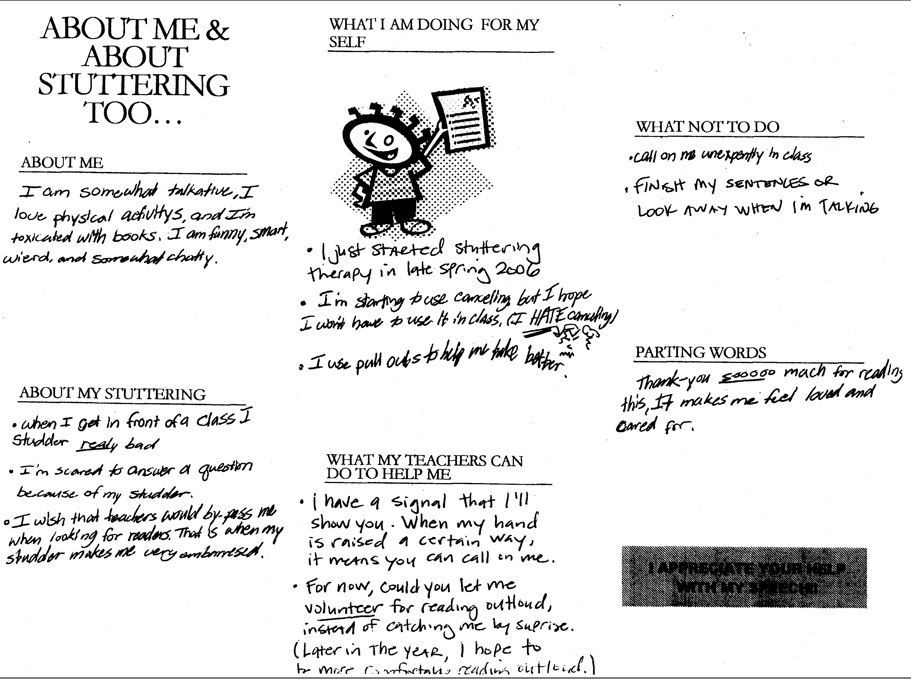Trifold Your Way to Better Communication with Teachers and Parents
 |
About the presenter: : Carrie L. Vitko, MS, CCC-SLP, BRS-FD works as a clinical supervisor for Bloomsburg University in Bloomsburg Pennsylvania. She currently supervises graduate speech clinicians working in an elementary school setting. Carrie can often be found recycling or trying to get her wonderful children to stop arguing. |
Trifold Your Way to Better Communication with Teachers and Parents
by Carrie Vitko
from Pennsylvania, USA
In this era of technology, and the many venues of electronic communication that I use in my daily personal and professional life, I am somewhat surprised to find that I continue to harbor such strong feelings for the quaint, the familiar, the ever-reliable, paper brochure.
It's such a simple thing. And yet so filled with potential! Unlimited subheadings abound. Clip art your heart out. Deliver your very important message to untold numbers if you are lucky enough to get the darn thing to print double sided!
I typically give teachers of students who stutter brochures from the NSA or the SFA at the beginning of the school year. But a few years ago I began to augment those very valuable publications with individualized brochures created by my students.
My most recent elementary level brochure was titled: Teachers and Students Who Stutter - A Great Team. Subheadings included: About Me, About My Stuttering, What I Am Doing For Myself, What My Teachers Can Do To Help Me, What Not To Do, and Parting Words. I also created a spot for information on advocacy and teasing on the back panel.
Below is a scanned example to this submission so that you can take a gander at a sample brochure created by a rising 6th grader.


Sharing individualized information with teachers about students who stutter is a no-brainer, I get that. And so are opportunities to review and summarize information with our clients. But I wanted here to share that in having the students create the brochures I had the opportunity to learn some things about my young clients that I had not been aware of prior to these little projects. Despite what I thought was a solid rapport with my kiddos, before the brochure making, I did not know that one of my clients hated cancellations. She was so so good at them, and had never revealed that she found them difficult or frustrating. And I had no idea that one of the young men I was working with actually preferred if people finished words for him if the word he was trying to say was obvious.
Know that the brochure making really is flexible. It can be used as an end of the year activity across a session or two to summarize learning and communicative preferences for next year's teacher(s), or it can be filled out slowly over several months, serving to punctuate different facets of intervention. Students who are older and/or who are very capable and creative writers can be 'set free' in terms of content. Younger students and/or students who require more assistance with writing can be supported in a variety of ways, including, but not limited to: the provision of brainstorming support, assistance in completing graphic organizers, 'fill in the blank' formats, copying key words onto the brochure after participating in a discussion with the therapist about the content, and so on and so on.
For school-based SLPs in particular, the planning and writing piece of the brochure task is a nice way to support your student in the regular education curriculum while at the same time supporting your student in his or her stuttering journey. And it can be a convenient way to combine education of teachers and parents along with the concepts of advertising and self-advocacy.
I would love to see some examples other than those of my clients for inspiration. If anyone has some on hand or decides to create a brochure, please send your informative origami my way. I'll happily unfold it.

